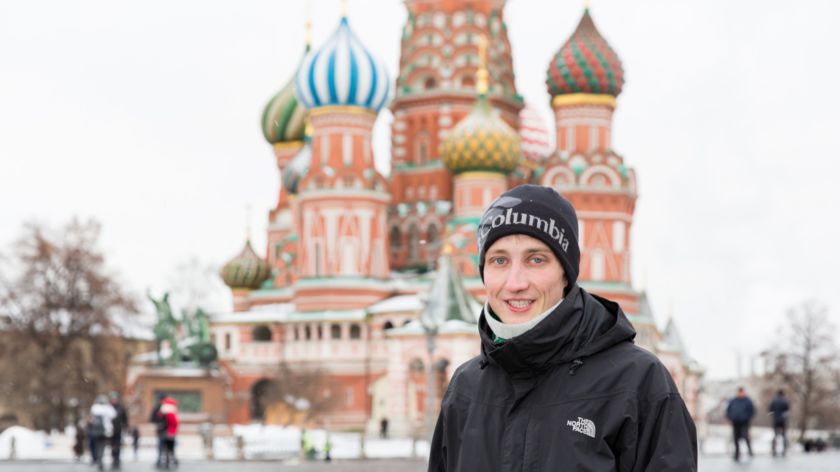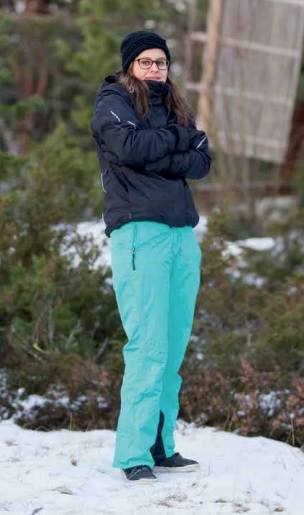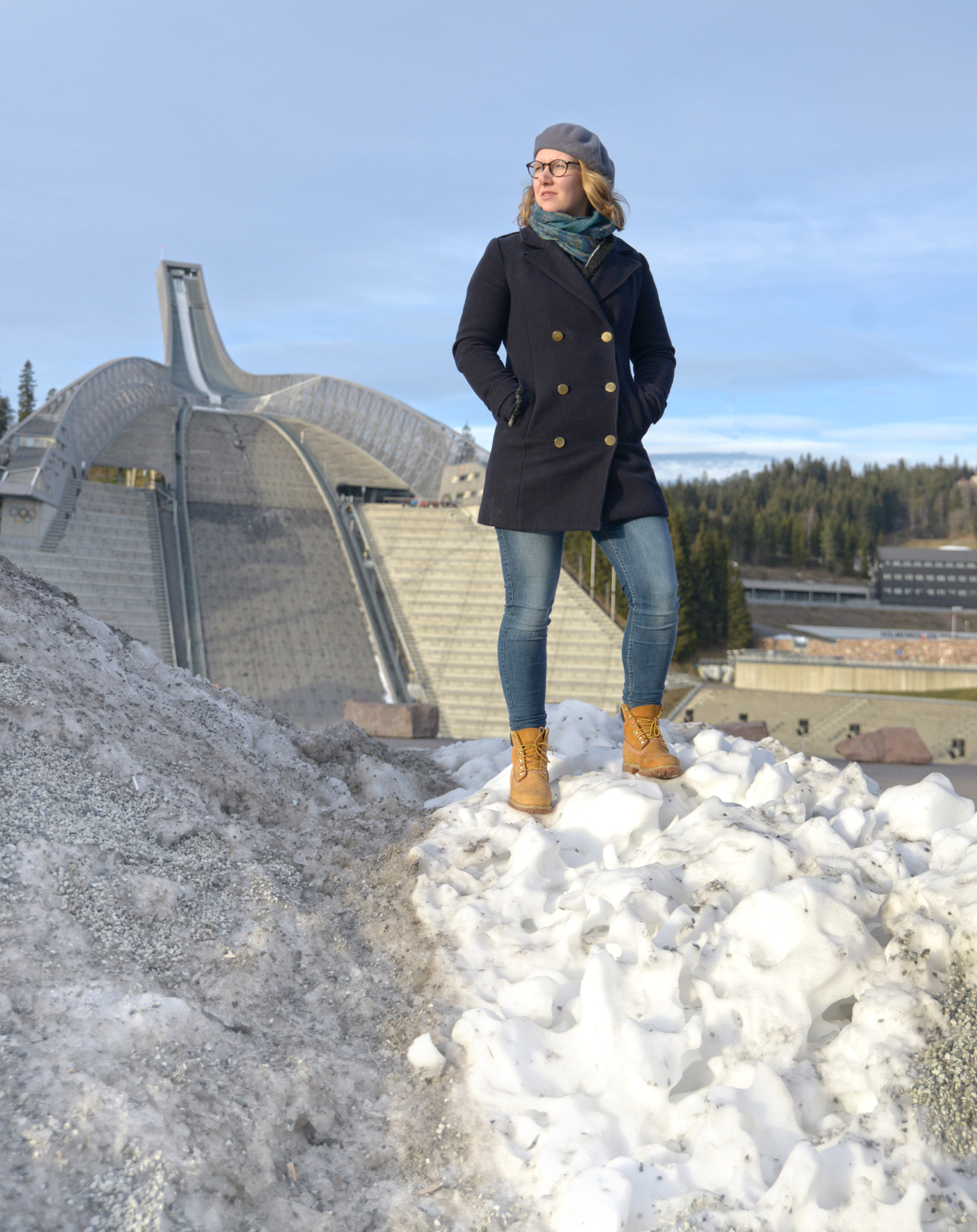Studying while it is minus 20 outside
-
 Felix Wagner. Foto: Antoine Heusse
Felix Wagner. Foto: Antoine Heusse
Nijmegen students and researchers in Sweden, Norway and Russia are experiencing real winters. The snow pitches for months on end and the sun sets at 2 pm. ”Everybody advises me to wear wool.”
Felix Wagner (22): ‘It’s 24 degrees in my room’
Student in Political Sciences at the Higher School of Economics.
‘I’ve been places where the wind chill factor was minus twenty, such as Lake Baikal and Saint Petersburg. In Moscow itself it’s also very cold: the ground has been covered in snow since October. It makes the city more beautiful, but when it thaws you have to be careful that you don’t get snow or icicles on your head. People here dress differently to protect themselves from the cold: the women wear fur coats, which is something you would never see in the Netherlands. They also eat more fatty food, with lots of sour cream, mayonnaise and meat fat. We don’t have radiators in our room that you can turn on or off; instead there is just central city heating that switches on and you just have to live with it. It gets turned on as soon as the weather remains cold for a few days. First we were really cold and then it got really hot. Russians like their houses hot: it’s often 24 degrees in my room. In the Trans-Siberian Express, the temperature would sometimes reach 26 or 27 degrees and we would all sit there sweating in our shorts and T-shirts. Some travellers opened a window, so we ended up heating the outside air. It’s not like in the Netherlands; public life doesn’t stop because of the snow and ice. Entire armies of cleaners walk around shovelling snow, and the streets are covered in salt and other chemicals. I don’t expect my shoes will last long here.’

Muriel van Teeseling (29): ‘Going to work in a ski suit’
Postdoc in Microbial Cell Biology at the University of Umeå in Sweden.
‘Today the sun rose at ten to nine and set at two in the afternoon. Later on in December it will get even worse. I do feel it, for instance in the fact that I have less energy and that I think my work day is nearly done at two in the after – noon. There are things you can do about it, such as using a daylight lamp. I now use one on a regular basis. I’ve lived in Sweden for a year now. I conduct research on bacteria forms at the University of Umeå. The first few months I was here, I didn’t see my garden once. The winters last half a year, and the snow stays on the ground for five months straight. On my way to work I cycled on a path that I assu – med was a bicycle path, but I later found it was a park. These things are kind of strange. I’m used to the cold now. We’ve already had temperatures below minus twenty, and I went outside when it was minus fifteen. You just have to wear proper clothing and not worry about what you look like on your bicycle. Swedes wear ski suits and goggles to work, and I do this too sometimes. The city looks like you would expect a Swedish city to look: wooden houses painted different colours with white edges. It makes everything look even prettier around Christmas. People often have advent candles in their win – dows. The Christmas season starts with the Lucia celebration on 13 December, when girls take part in a procession wearing candles on their heads, and people eat lussekater, saffron buns.’

Leonoor Borgesius (27): ‘I’m a real winter person’
Master’s student in History at the University of Oslo.
‘Here in Oslo we’ve had a lot of snow and frost already. I’m a real winter person. I skated for a long time, and I don’t like hot weather: it makes me cranky. Children here learn that there is no such thing as bad weather, only bad clothing. Everybody advises me to wear wool. My lecturer, an elderly Norwegian lady who bakes buns for her students, already insisted back in September that I should buy myself some wool underwear at the sports shop, because otherwise I might get sick when it starts freezing. Everybody here wears those typical Norwegian jumpers. The most famous kind, with blue and red, are called mariusgenser. These jumpers cost almost two hundred euros, but they last a lifetime. The father of a friend of mine here has been wearing his for forty years. I bought myself a cheaper version. My lecturer could tell by the pattern and colours that it came from Trondheim. When I get on the metro here, especially at the weekend, I see lots of people in ski suits heading for the mountains. Norwegians do a lot of alpine and cross-country skiing. There are even lit slopes, so that they can go cross-country skiing after work. I find the dark at this time of year harder to cope with than in the lighter months, but there are things you can do about it. I just take vitamin D pills and then everything is OK.’



